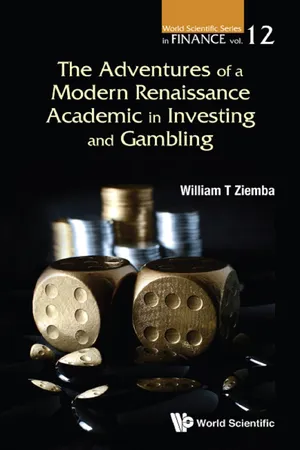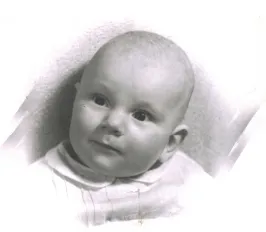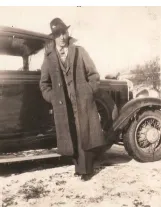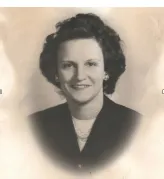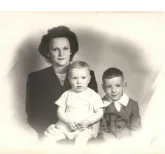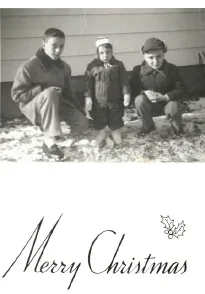![]()
Chapter 1
Beginning
On his deathbed on May 2, 1519, in the castle of French King Francois I at Amboise, Leonardo di Vinci, my greatest hero, died saying “I have so much more to do.” Well he did a lot as the world’s greatest scientist, painter, sculptor, inventor, geologist, anatomist, mathematician, engineer, writer and all the myriad of other things he did living until 67 from his April 15, 1452 birth in Vinci, near Florence.
There is no way my travels and experiences can begin to match Leonardo’s but at least I set a high goal. In this book, I trace a career from a small town in Massachusetts to the big time as a graduate student at Berkeley in the 1960s which then was the greatest university in the world and then on to a life mostly in British Columbia with many visits across the world to do research, visit universities, attend conferences, consult and write books and work on some very interesting financial market research with some major institutions and very wealthy investors. Along the way, I moved across fields starting with chemical engineering at the University of Massachusetts in Amherst where I spent four delightful but difficult years from 1959–1963. Then the question was where to go to graduate school — I actually applied in five fields: chemical engineering, metallurgy (inspired by a summer doing work at Penn State University), patent attorney, one I forgot and an MBA in business.
Doug Wilde, a red-headed colorful and exciting speaker from the Chemical Engineering Department at the University of Texas gave a stimulating talk on network optimization using dynamic programming — an important theory of how best to make multiperiod decisions. That was a very influential lecture for me and was at the University of Connecticut in Storrs where a group of us from UMass went to have a joint function with their students and hear Doug’s lecture.
That was a serious introduction to operations research and optimization — the way to do things the best way. Doug beat out my Korean University of Massachusetts mass transport teacher In Ho Kim who used to say “got to go to MIT” for a choice position at Stanford where I would have many visits and gave many talks over the years up to the present. UMass was a good school but a visit to MIT’s Chemical Engineering Department and walking down the hall and seeing door after door the names of the textbooks we were using made a big impact. MIT was the big time. Later in 2005, I was pleased to teach at MIT. Discussions with my economic theory teacher Professor Sidney Schloeffler sealed the deal. Why not go to the best school and that was Berkeley which was even more famous than MIT or Harvard the top Massachusetts schools. Economic theory was slick and elegant but made strict assumptions and we know to this day its successes and failings.
Schloffler suggested the MBA program at Berkeley. I was accepted and turned down the other schools and headed to Berkeley. Despite its fame it was cheap to go there and by the second year I was a California resident and tuition was only $100 each of the three quarters. This was a much simpler era than now and my truck driver father with three children to send to college with a stay at home wife had funds so I did not need to take on any debt.
Berkeley was tough with really good students and famous professors and I drifted into operations research where Berkeley and Stanford were #1 and #2 ahead of #3 and #4 MIT and Cornell. I did a masters thesis on the optimization of the inventory control system of The Berkeley Lawrence Radiation Laboratory which was in the hills above Berkeley. My advisor C Bartlett McGuire was a gem at the business school helping all sorts of students. Bart did not have a PhD but was plugged in having spent time at the Cowles Commission at Yale, the Rand Corporation in Santa Monica, California and other good places. He got me a summer job at the Institute for Defense Analysis, Arlington, Virginia at the aptly named 400 Army Navy Drive, where I was part of the team studying the possible United States supersonic aircraft. We built a linear programming model of the world and it bought airplanes to serve the world’s demand for air travel and cargo. It was cargo that was my role to figure out what it was worth. I visited Pan Am in New York and got the data on the cargo’s contribution to earnings. I learned that Pan Am executives did not know much about their business and I was able to determine what shipping the cargo was worth. Blind Rochester economics professor Walter Oi was part of the team which was headed by Bill Niskanen who later became the head of the Cato Institute. It turned out that the 747 dominated the supersonic so that and the pollution killed the SST. So 200K was enough as the project budget to save the US the billions that France and the UK lost.
One day I ventured into the library. My fellow Berkeley student colleague Stewart was looking at a globe. I asked what are you doing? He said finding cities in Russia to bomb on my simulation. He was working for the Weapons System Evaluation Group (WSEG) on a classified floor of the building.
I had a nice drive with a few Berkeley friends through the US to get to Washington, DC. The summer was hot and muggy (typical DC weather). I shared a room with Art Frass. After the summer I drove myself up to Adams then to Montreal and across Canada to Banff in Alberta and then to British Columbia and down the coast to Berkeley. It took 12 days but was a good trip.
Another summer I got a job at the Norwegian Computing Centre in Oslo and wrote a computer code for the transportation program which is how to ship from A to B through a complicated network of intermediate transshipment points. I played on the local rugby team with mostly a bunch of English beer drinkers but I survived uninjured. While there I bought a cross country ski outfit: skis, boots and poles for $25 which I still have. That was enjoyable.
The business PhD at Berkeley had a lot of flexibility and I was able to complete it with essentially no more business courses beyond the MBA but rather I could focus on operations research, statistics (also #1 and #2 with Stanford) and Economics which was also at the top. There was lots of contact with and visits to Stanford which was close by. So I had access to two great places. At the time I did not realize the greatness of some of the teachers — some later won the Nobel Prize in Economics like Gerard Debreu, Daniel Mc Fadden and John Harsanyi and some were arguably just as important like Roy Radner and Dale Jorgenson. And the most brilliant of all to me at the time was David Blackwell of the statistics department who was my best teacher ever. I took his class in dynamic programming (the study of multiperiod decision problems) in 1963 and no matter how vague the student questions were he always explained them clearly. One of his 12-page papers on dynamic programming had so much in it that it became a whole course at Berkeley. The breath, depth and diversity of the courses at Berkeley gave me a great advantage as I was ahead of others in important areas, especially portfolio theory.
The University of British Columbia in Vancouver was just getting going and my Berkeley roommate now one of Canada’s most distinguished economists Erwin Diewert pushed Vancouver — the homeland he would say. With no offer from Stanford — they hired someone less talented than I but arguably a better teacher who they got rid of a few years later — I was off to UBC. My girlfriend Sandra Schwartz, a brilliant thinker in economics and public policy came up and we were later married in a giant ceremony in Carson City with a judge and a witness. She has been my mentor and companion since. UBC had its ups and downs but I was able to do good work there in lots of areas and it was a good base to work from and there was a good research atmosphere and some good colleagues and Vancouver was always a great city to live in.
But as the years went by and I got more famous instead of being treated better I was not liked. Creative people were not liked especially if they were inventors of new fields and traveled a lot. I was simply too creative for the place and fields like risk management and stock market anomalies not to mention oriental carpets and horse racing were not popular. Jealousy was rampant as it is in many universities but UBC Commerce was sure in the tail. What the Deans wanted was boring xerox copy people who show up 9–4:30 and pal around. Some were excellent but got ruined by the excess administration but most were mediocre. The good ones mostly left eventually and went to better Universities in the US and Europe. There was a time of excellence in the 1970s and 1980s that decayed later with the poor vision of the sequence of Deans who had no idea who was good. The late Bruce Fauman, who coined the name Dr Z for me, put it this way, writing from the 1984 Breeder’s Cup, see Chapter 10, he said:
And has it changed in 2017, as I finish this book? Well, the last president, a computer science researcher, was trying to reform the whole university to focus more on higher quality faculty, stronger in research and less on administrators taking the vast bulk of resources. Well, he is now a visitor back where he started at the University of Toronto. Reform is tough and the administrators were able to kick him out.
I recall one dean telling me when I asked gently for a raise to fair value based on superior research and strong innovative research. His response: I don’t care what the faculty handbook says, I decide what to give people.
But, UBC and Vancouver in particular had some advantages which were better in the early days-a long summer, frequent sabbaticals (once after 4 years of teaching at 60% pay), a great city, some good courses to teach, some good students, lovely mountains, beaches and skiing. As a base I could do a lot of things. Much was academic and I became a star in the operations research/management science approach to finance community. This led to lots of jealousy from the pure efficient market types so I had to be somewhat of a loner. It was good to start out as a theorist in mathematical and stochastic programming armed with my great Berkeley training and then be a pioneer in quantitative finance, risk management, asset-liability management and portfolio theory and its applications to horse racing and other areas.
Along the way I was always interested in horse racing having gone to the local track Saratoga near my Berkshires home in Adams, Massachusetts. That took me down the path of gambling research. It was this combination of solid academic training and research and knowledge of gambling that attracted the many billionaires and other investment people to search me out.
I hope you readers enjoy my story, which is a combination of my experiences embedded into the modern advances in the financial markets, and I have been pleased to write it all down. Along the way, I interacted with many academic and trading greats from Nobel Prize winners to a number who started with nothing and became fabulously rich. Most of them won’t write their stories so I hope my account is sufficient.
Why am I not a billionaire? Well, I suppose I could have been extremely wealthy. Actually my family and I are comfortable and we all can do what we want. But the billionaires are very focused, disciplined individuals who generally focus on one thing and do that well. They do not usually write books or give lectures all around the world. Well, George Soros is an exception and so is my colleague Ed Thorp. I like to be thorough and explain my ideas and help others. After more than 30 books and 200 research papers, the fun of writing took a lot of time but records and discusses lots of interesting things.
![]()
Chapter 2
The Early Days in Adams and at the University of Massachusetts in Amherst
I was born on August 30, 1941 in Adams, Massachusetts. I had the same birth date as my boyhood hero Ted Williams, arguably the greatest pure hitter in baseball history. Later, I discovered that Warren Buffett an investment hero, also shared the day.
To Ted Williams, hitting was a science. Each ball in the display case has Ted Williams’ estimate of his batting average should the ball be thrown there. His eyesight was so good that he would not swing at a ball if it was a half inch outside the strike zone. Hence, the umpires realizing this knew if he did not swing it should be a ball.
Me at six months 7
Wedding of my mother and father, on the far right. On the far left is my mother’s sister Rose, in the middle are my father’s sisters Annie and Helen
My father with a new car
My mother, Mary Moser
My father, a great fisherman, truck driver and gas station owner, was very generous to his oldest son, me
My mother with my younger brother Gary and me
Me with sister Carol, who later worked at the Clark Art Museum in Williamstown (part of the Getty Museum) and little brother Gary
The three of us children, me, Carol and Gary posing for our Christmas card
Adams, a small town in the Berkshires was a very good place to grow up. Travel was mostly to Boston to see a Red Sox baseball game or to the Saratoga race track. My father, a truck driver and later gas station owner, was very generous and provided well for his family. He bought our house for $7,000 in 1941. We lived at 6 Forest Park Avenue on a quiet street near the downtown. I was the oldest with one brother and one sister. Growing up we were all very involved in various sports, especially me. In my teens, in the summer we would play basketball for 6 or 8 hours daily. I liked golf and used to play at a course just up the street from our house. I liked to caddy and most rem...
